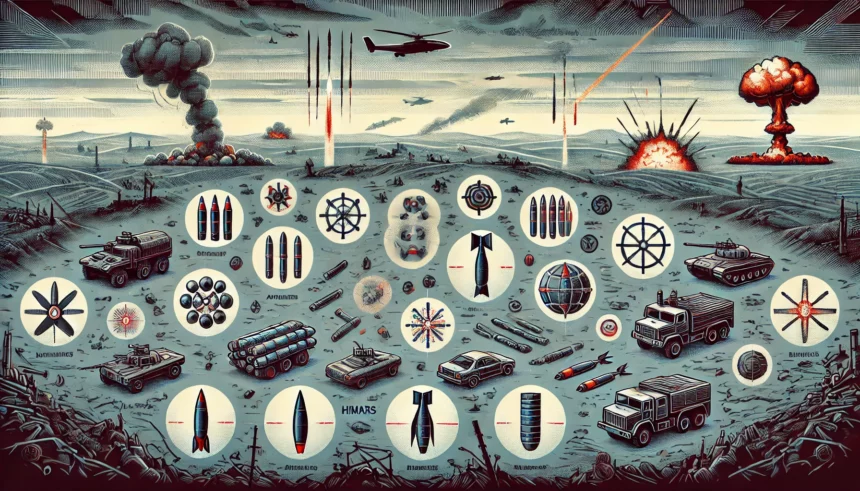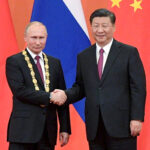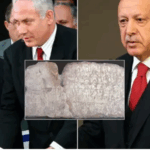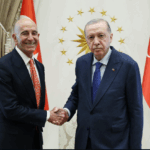Summary and Additional Remarks by Geopolist | Istanbul Center for Geopolitics:
The article explores how Ukraine’s use of cluster munitions has evolved since the Russian invasion, beginning with limited supplies from Turkey and gradually incorporating U.S.-provided cluster rounds for artillery and HIMARS rockets. The recent approval of AGM-154 precision glide bombs completes Ukraine’s arsenal of cluster weapons, enabling strikes at various ranges—from artillery’s 20 km to aircraft-deployed bombs reaching 100 km. This multi-layered deployment has led to a dramatic increase in Russian casualties, especially in counter-battery operations, and has intensified the debate on NATO’s stance on cluster munitions.
Timeline of Cluster Munitions Use:
- Initial Restrictions: When Ukraine first received Western military support, it was limited to high-explosive (HE) artillery shells and rockets, which were less effective against Russian forces. Turkey’s decision to send 155mm Dual-Purpose Improved Conventional Munitions (DPICM) in late 2022 marked the first significant introduction of cluster munitions, enhancing Ukraine’s ability to target Russian troops and artillery.
- Turkey’s Early Impact: The initial batch of 3,500 DPICM rounds had a disproportionate impact, greatly increasing Russian casualties. This success prompted Turkey to increase the supply to 3,500 rounds per month. These weapons proved especially effective for counter-battery fire—allowing Ukrainian forces to more accurately strike and neutralize Russian artillery positions.
- Gradual U.S. Involvement: In July 2023, the United States began providing 155mm DPICM rounds, further boosting Ukraine’s capabilities. In October 2023, the U.S. expanded this support to include HIMARS cluster rockets and ATACMS missiles, which were instrumental in some of Ukraine’s most significant attacks. For example, the ATACMS strike on Russian airfields in Crimea destroyed 24 attack helicopters, marking one of Russia’s largest air losses since World War II.
- The Addition of Air-Delivered Cluster Munitions: The approval of AGM-154 precision cluster bombs for Ukraine’s air force completes the range of cluster munitions available. These 100km-range bombs can be launched from aircraft deep into Russian territory, significantly extending Ukraine’s strike capabilities. Each type of cluster munition—whether artillery, rocket, or air-delivered—serves a unique tactical purpose, allowing for layered defense and offense.
Effectiveness and Impact:
The effectiveness of cluster munitions is visible in Russia’s casualty rates, which surged to over 35,000 casualties per month starting in May 2024. Ukraine’s Ministry of Defense estimates over 150,000 Russian dead or wounded in the past five months alone, with over 1,400 artillery pieces destroyed monthly. The introduction of these munitions has shifted the battlefield dynamics, demonstrating their tactical value despite ongoing political concerns.
Political Controversy and NATO’s Stance:
The use of cluster munitions remains contentious due to the unexploded ordnance they leave behind, which poses risks to civilians long after conflicts end. The Cluster Munitions Convention (CMC), signed by several NATO members, prohibits the use of such weapons. The article argues that the success of these munitions in Ukraine should prompt NATO members to reconsider their stance. It specifically calls on countries like Norway to follow Lithuania’s example and withdraw from the CMC, arguing that effective deterrence against Russia requires embracing such capabilities.
Broader Implications for NATO:
General David Petraeus is quoted advocating for NATO to re-evaluate its policies, suggesting that the Ukraine conflict has shattered post-Cold War assumptions about the utility of cluster munitions. With the ongoing Russian invasion of Ukraine highlighting the effectiveness of these weapons, the article asserts that NATO should support their use to enhance defense and deterrence capabilities across Europe’s eastern flank.
The piece ultimately calls for a paradigm shift, urging Western powers to provide Ukraine with all available cluster munitions in large quantities, arguing that doing so is essential to achieving victory and deterring future conflicts.
Read more here.







